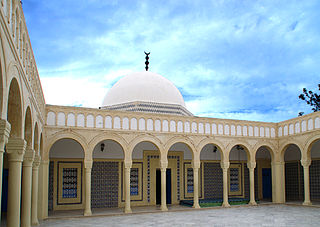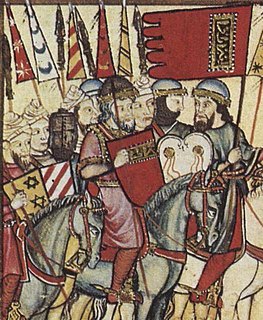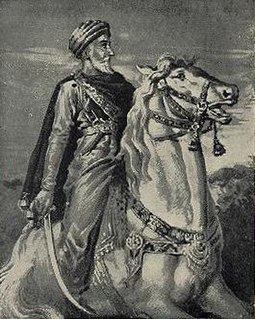 W
WMoulai Abdullah was the first Ismaili, Fatimid, mustaali saint who came to Cambay (Khambat), Gujarat in India in about 1067 AD (460AH) from Haraz Mountains, Yemen. Syedi Nuruddin was his companion who also visited Imam Al-Mustansir Billah, Egypt. He joined the Ismaili faith under Fatimid Dai Mu'ayyad fi'l-Din al-Shirazi, and came back to Khambat, India to propagate the Taiyabi faith. His earlier name was Balam Nath.
 W
WAbū l-Ḍawʾ Sirāj ibn Aḥmad ibn Rajāʾ was a Sicilian Muslim administrator and Arabic poet in the Norman county of Sicily. He worked closely with Count Roger II as a secretary and later wrote a poem on the death of one of Roger's sons.
 W
WʿAbd al-Raḥmān b. ʿAlī b. Muḥammad Abu 'l-Faras̲h̲ b. al-Jawzī, often referred to as Ibn al-Jawzī for short, or reverentially as Imam Ibn al-Jawzī by some Sunni Muslims, was an Arab Muslim jurisconsult, preacher, orator, heresiographer, traditionist, historian, judge, hagiographer, and philologist who played an instrumental role in propagating the Hanbali school of orthodox Sunni jurisprudence in his native Baghdad during the twelfth-century. During "a life of great intellectual, religious and political activity," Ibn al-Jawzi came to be widely admired by his fellow Hanbalis for the tireless role he played in ensuring that that particular school – historically, the smallest of the four principal Sunni schools of law – enjoy the same level of "prestige" often bestowed by rulers on the Maliki, Shafi'i, and Hanafi rites.
 W
WMuhammad ibn Ali ibn Omar ibn Muhammad al-Tamimi al-Maziri, simply known as Al-Maziri or as Imam al-Maziri and Imam al-Mazari, was an important Arab Muslim jurist in the Maliki school of Sunni Islamic Law. He was one of the most important figures in the school and his opinions are well known and respected to this day. Al-Maziri was one of four jurists whose positions were held as authoritative by Khalil ibn Ishaq in his Mukhtassar, which is the most important of the later texts in the relied upon positions of the school. It is for this reason that he is referred to simply as al-Imam within the Maliki school.
 W
WAli ibn Hatim al-Hamidi was the fourth Tayyibi Isma'ili Dāʿī al-Muṭlaq in Yemen, from 1199 to his death in 1209.
 W
WIbn ʿArabi, full name Abū ʿAbd Allāh Muḥammad ibn ʿAlī ibn Muḥammad ibn al-ʿArabī al-Ḥātimī al-Ṭāʾī al-Andalusī al-Mursī al-Dimashqī, nicknamed al-Qushayri and Sultan al-ʿArifin, was an Arab Andalusian Muslim scholar, mystic, poet, and philosopher, extremely influential within Islamic thought. Out of the 850 works attributed to him, some 700 are authentic while over 400 are still extant. His cosmological teachings became the dominant worldview in many parts of the Muslim world.
 W
WArwa Al-Sulayhi, full name Arwā bint Aḥmad ibn Muḥammad ibn Jaʿfar ibn Mūsā Aṣ-Ṣulayḥī was a long-reigning ruler of Yemen, firstly as the co-ruler of her first two husbands and then as sole ruler, from 1067 until her death in 1138. She was the last of the rulers of the Sulayhid Dynasty and was also the first woman to be accorded the prestigious title of Hujjah in the Isma'ili branch of Shia Islam, signifying her as the closest living image of God's will in her lifetime, in the Ismaili doctrine. She is popularly referred to as As-Sayyidah Al-Ḥurrah, Al-Malikah Al-Ḥurrah (Arabic: ٱلْمَلِكَة ٱلْحُرَّة or Al-Ḥurratul-Malikah, and Malikat Sabaʾ Aṣ-Ṣaghīrah. She is known by the name Arwa. However, this name does not have any historical source and all historical sources name her "Sayyidah bint Ahmed".
 W
W‘Iyad ibn Musa (1083–1149), born in Ceuta, then belonging to the Almoravid dynasty, was the great imam of that city and, later, a qadi in the Emirate of Granada.
 W
WDhuʾayb ibn Mūsā al-Wādiʿī al-Hamdānī was the first dāʿī al-muṭlaq, a position of spiritual authority in Tayyibi Isma'ili Islam. He was appointed to the position by Queen Arwa al-Sulayhi.
 W
WHatim ibn Ibrahim al-Hamidi, Al-Hutaib, Yemen) was the third Tayyibi Isma'ili Dāʿī al-Muṭlaq. He was of the Banu Hamdan tribe of Yemen and succeeded his father, the 2nd Dai Sayedna Ibrahim, to the religious post.
 W
WAbū Muḥammad Jābir ibn Aflaḥ was an Arab Muslim astronomer and mathematician from Seville, who was active in 12th century al-Andalus. His work Iṣlāḥ al-Majisṭi influenced Islamic, Jewish, and Christian astronomers.
 W
WIbn al-Farid or Ibn Farid; was an Arab poet. His name is Arabic for "son of the obligator", as his father was well regarded for his work in the legal sphere. He was born in Cairo to parents from Hama in Syria, lived for some time in Mecca, and died in Cairo. His poetry is entirely Sufic and he was esteemed as the greatest mystic poet of the Arabs. Some of his poems are said to have been written in ecstasies.
 W
WIbn Jubayr, also written Ibn Jubair, Ibn Jobair, and Ibn Djubayr, was an Arab geographer, traveller and poet from al-Andalus. His travel chronicle describes the pilgrimage he made to Mecca from 1183 to 1185, in the years preceding the Third Crusade. His chronicle describes Saladin's domains in Egypt and the Levant which he passed through on his way to Mecca. Further, on his return journey, he passed through Christian Sicily, which had been recaptured from the Muslims only a century before, and he made several observations on the hybrid polyglot culture that flourished there.
 W
WIbn Qudāmah al-Maqdīsī Muwaffaq al-Dīn Abū Muḥammad ʿAbd Allāh b. Aḥmad b. Muḥammad , often referred to as Ibn Qudamah or Ibn Qudama for short, was a Sunni Muslim ascetic, jurisconsult, traditionalist theologian, and Sufi mystic. Having authored many important treatises on Islamic jurisprudence and religious doctrine, including one of the standard works of Hanbali law, the revered al-Mug̲h̲nī, Ibn Qudamah is highly regarded in Sunnism for being one of the most notable and influential thinkers of the Hanbali school of orthodox Sunni jurisprudence. Within that school, he is one of the few thinkers to be given the honorific epithet of Shaykh of Islam, which is a prestigious title bestowed by Sunnis on some of the most important thinkers of their tradition. A proponent of the classical Sunni position of the "differences between the scholars being a mercy," Ibn Qudamah is famous for having said: "The consensus of the Imams of jurisprudence is an overwhelming proof and their disagreement is a vast mercy."
 W
WHujjat al-Din Abu Abdallah Muhammad ibn Abi Muhammad ibn Muhammad ibn Zafar al-Siqilli, commonly known simply as Ibn Zafar al-Siqilli, was a philosopher, polymath and Arab-Sicilian politician of the Norman period, and has come to be known in the West as "Niccolò Machiavelli's Arab Precursor".
 W
WAbū Marwān ‘Abd al-Malik ibn Zuhr, traditionally known by his Latinized name Avenzoar, was an Arab physician, surgeon, and poet. He was born at Seville in medieval Andalusia, was a contemporary of Averroes and Ibn Tufail, and was the most well-regarded physician of his era. He was particularly known for his emphasis on a more rational, empiric basis of medicine. His major work, Al-Taysīr fil-Mudāwāt wal-Tadbīr, was translated into Latin and Hebrew and was influential to the progress of surgery. He also improved surgical and medical knowledge by keying out several diseases and their treatments.
 W
WIbrahim ibn al-Husayn ibn Abi'l-Su'ud al-Hamidi was the second Tayyibi Isma'ili Dāʿī al-Muṭlaq in Yemen.
 W
WAbu Abdullah Muhammad al-Idrisi al-Qurtubi al-Hasani as-Sabti, or simply al-Idrisi, was an Arab Muslim geographer, cartographer and egyptologist who for some time lived in Palermo, Sicily at the court of King Roger II. Muhammed al-Idrisi was born in Ceuta then belonging to the Almoravids. He created the Tabula Rogeriana, one of the most advanced medieval world maps, used by explorers like Christopher Columbus and Vasco Da Gama for their discoveries and voyages.
 W
WAbu Muhammad Izz al-Din Abdul Aziz bin Abd al-Salam bin Abi al-Qasim bin Hassan al-Salami al-Shafi’i, also known by his titles, Sultan al-'Ulama/ Sulthanul Ulama, Abu Muhammad al-Sulami, was a famous mujtahid, theologian, jurist and the leading Shafi'i authority of his generation. He was described by Al-Dhahabi as someone who attained the rank of ijtihad, with asceticism and piety and the command of virtue and forbidding of what is evil and solidity in religion. He was described by Ibn al-Imad al-Hanbali as the sheikh of Islam, the imam of the scholar, the lone of his era, the authority of scholars, who excelled in jurisprudence, origins and the Arabic language, and reached the rank of ijtihad, and received students who traveled to him from all over the country.
 W
W‘Abd al-Ghanī ibn ‘Abd al-Wāḥid al-Jammā’īlī al-Maqdisi was a classical Sunni Islamic scholar and a prominent Hadith master. His full name was al-Imam al-Hafidh Abu Muhammad Abdul-Ghani ibn Abdul-Wahid al-Jammaʻili al-Maqdisi al-Hanbali. He was born in 541 AH in the village of Jummail in Palestine. He studied with scholars in Damascus; many of whom were from his own extended family. He studied with many scholars including the Imam of Tasawwuf, Shaykh Abdul Qadir al-Jilani. He was the first person to establish a school on Mount Qasioun near Damascus. He died in 600 AH.
 W
WAbu Abdullah Muhammad ibn Yusuf ibn Nasr, also known as Ibn al-Aḥmar and by his honorific al-Ghalib billah, was the first ruler of the Emirate of Granada, the last independent Muslim state on the Iberian Peninsula, and the founder of its ruling Nasrid dynasty. He lived during a time when Iberia's Christian kingdoms—especially Portugal, Castile and Aragon—were expanding at the expense of the Islamic territory in Iberia, called Al-Andalus. Muhammad ibn Yusuf took power in his native Arjona in 1232 when he rebelled against the de facto leader of Al-Andalus, Ibn Hud. During this rebellion, he was able to take control of Córdoba and Seville briefly, before he lost both cities to Ibn Hud. Forced to acknowledge Ibn Hud's suzerainty, Muhammad was able to retain Arjona and Jaén. In 1236, he betrayed Ibn Hud by helping Ferdinand III of Castile take Córdoba. In the years that followed, Muhammad was able to gain control over the southern cities, including Granada (1237), Almería (1238) and Málaga (1239). In 1244, he lost Arjona to Castile. Two years later, in 1246, he agreed to surrender Jaén and accept Ferdinand's overlordship in exchange for a 20-year truce.
 W
WAbu Bakr Muhammad Ibn ‘Abd al-Bāqī al-Baghdadi al-Ansārī al-Kaabī (1050-1141) also known as Qadi al-Maristan, was an Arab jurist and mathematician.
 W
WMuhammad ibn Aslam Al-Ghafiqi was a 12th-century Andalusian-Arab oculist and author of The Right Guide to Ophthalmology.
 W
WHassan-i Sabbāh or Hassan as-Sabbāh was the founder of the Nizari Isma'ili state and its fidā'i military group known as the Order of Assassins, often referred also as the Hashshashin. Since Marco Polo he has been known in the West as the Old Man of the Mountain. As a missionary, he converted the people of the Alborz Mountains of northern Iran to Nizari Isma'ilism in the late 11th century. He later seized a mountain fortress called Alamut.
 W
WSidi Abu al-Qasim Abd al-Rahman b. Abd Allah al-Suhayli, was born in Al-Andalus, Fuengirola and died in Marrakesh. He is one of the seven saints of that city. Al-Suhayli wrote books on grammar and Islamic law. He is especially well known as an Islamic scholar by his commentary on the sira of Ibn Hisham. Al-Suhayli came to Marrakesh around 1182 at the call of the Almohad sultan Abu Yusuf Ya'qub al-Mansur. He died here three years later, and his zaouia, in a cemetery just outside Bab er Robb, hides a former gate in the wall called Bab el Charia. His tomb is visited yearly by many pilgrims. The cemetery Bab Ech Charia, walled today, is built at the place where the Almohad troops of Abd El Moumen defeated the Almoravids in 1147.
 W
WAl-Ṭayyib Abū'l-Qāsim ibn Al-Manṣūr was, according to the Tayyibi Isma'ili-Musta'li sect of Isma'ilism, the twenty-first Imam and the last Caliph of the Fatimid Caliphate. Abu Al-Qasim was the son of the twentieth Fatimid Imam, Al-Amir bi-Ahkami'l-Lah, who ruled Egypt from 1101–1130. He was born in Cairo on Sunday, March 16, 1130 and was 2 years 7 months old when his father, Al-Amir, was assassinated in the night of Thursday, October 15, 1132. Tayyib was reported to be about two years old at the time of al-Amir's assassination. Al-Hafiz was appointed representative Caliph on behalf of Imam Al-Tayyib. Later Al-Hafiz declared himself as Imam and Caliph in 528 AH/1134 AD, and Al-Tayyib was believed by Taiyabis to be taken into hiding.
 W
WAḥmad III Abū Jaʿfar ibn ʿAbd al-Malik al-Mustanṣir, called Sayf al-Dawla, Latinised as Zafadola, was the last ruler of the Hudid dynasty. He ruled the rump of the taifa kingdom of Zaragoza from his castle at Rueda de Jalón, in what is now Spain. He was the son of ʿAbd al-Malik.